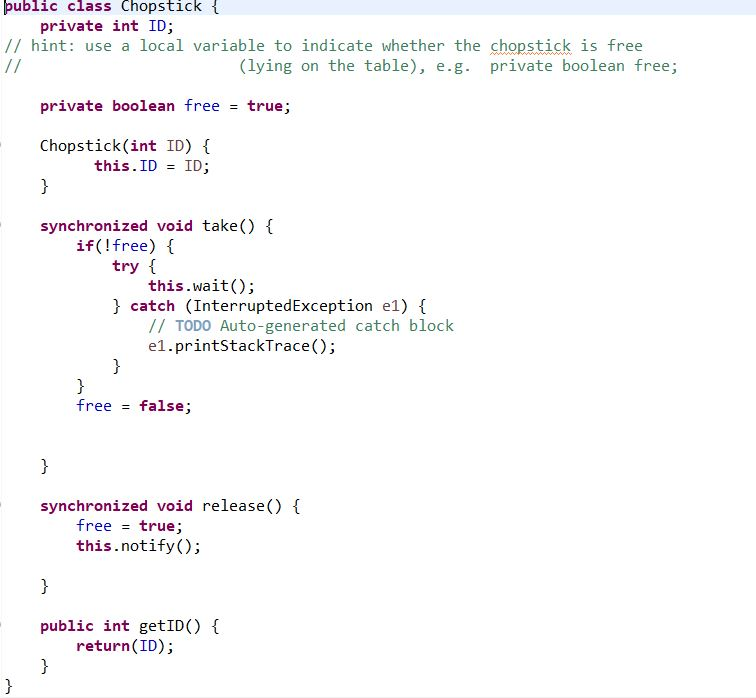Question
Modify the Java code implemented in the Philosopher Class by using Sempahores, to allowing only four philosophers to eat at the same time. This concept
Modify the Java code implemented in the Philosopher Class by using Sempahores, to allowing only four philosophers to eat at the same time. This concept can be easily implemented using a counting semaphore to limit the number of philosophers which can start taking chopsticks at the same time to four. This way, at least one philosopher will be able to eat, and later release the chopsticks, then allowing at least another to eat, etc.
public class Philosopher extends Thread {
private GraphicTable table;
private Chopstick left;
private Chopstick right;
private int ID;
final int timeThink_max = 5000;
final int timeNextFork = 100;
final int timeEat_max = 5000;
Philosopher(int ID, GraphicTable table, Chopstick left, Chopstick right) {
this.ID = ID;
this.table = table;
this.left = left;
this.right = right;
setName("Philosopher "+ID);
}
public void run() {
while(true){
// Tell the table GUI that I am thinking
table.isThinking(ID);
// Print to console that I am thinking
System.out.println(getName()+" thinks");
// Let the thread sleep (in order to simulate thinking time)
try {
sleep((long)(Math.random()*timeThink_max));
} catch(InterruptedException e) {
System.out.println(e);
}
// Done with thinking
System.out.println(getName()+" finished thinking");
// and now I am hungry!
System.out.println(getName()+" is hungry");
// Tell the GUI I am hungry...
table.isHungry(ID);
// Let's try to get the left chopstick
System.out.println(getName()+" wants left chopstick");
left.take();
// Tell the GUI that I took the left chopstick
table.takeChopstick(ID, left.getID());
System.out.println(getName()+" got left chopstick");
// I'll wait a bit before I try to get the next chopstick (it's philosopher's etiquette)
try {
sleep(timeNextFork);
} catch(InterruptedException e) {
System.out.println(e);
}
// Ok, enough etiquette nonesense, now I need my right chopstick
System.out.println(getName()+" wants right chopstick");
right.take();
// Got it!
table.takeChopstick(ID, right.getID());
System.out.println(getName()+" got right chopstick");
// Sweet taste of steamed rice....
System.out.println(getName()+" eats");
try {
sleep((long)(Math.random()*timeEat_max));
} catch(InterruptedException e) {
System.out.println(e);
}
// Ok, I am really full now
System.out.println(getName()+" finished eating");
// I just realized I did not wash these chopsticks
// and the philosopher on my right is coming down with a flu
// I'll release the left chopstick
table.releaseChopstick(ID, left.getID());
left.release();
System.out.println(getName()+" released left chopstick");
// I'll release the right chopstick
table.releaseChopstick(ID, right.getID());
right.release();
System.out.println(getName()+" released right chopstick");
}
}
}

Step by Step Solution
There are 3 Steps involved in it
Step: 1

Get Instant Access to Expert-Tailored Solutions
See step-by-step solutions with expert insights and AI powered tools for academic success
Step: 2

Step: 3

Ace Your Homework with AI
Get the answers you need in no time with our AI-driven, step-by-step assistance
Get Started


